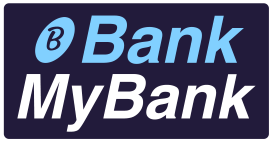A balance sheet provides information about a company’s operations. It reveals the owners of the business’s debts, assets, and net worth. In order for interested parties to make educated financial decisions, a balance sheet provides a summary of a company’s financial situation.
Making money is always a company’s primary objective. The balance sheet shows whether the company is losing money or gaining money, which helps directors decide what steps to take next. A balance sheet is a tool for making decisions.
A balance sheet allows you to take a look inside your company and determine its true value. A balance sheet is not the same as a profit and loss statement. It’s a spreadsheet with a list of assets and liabilities. Some fundamentals are included in an excellent balance sheet:
- What the company owns (real estate, vehicles, office equipment, etc.)
- The amount of money you hope to make (accounts receivable)
- Expenses that you expect to incur (accounts payable)
Read More: Transferring SBI accounts between branches
For many people, delving into the intricacies might be intimidating, especially if they are starting a business as a money-making pastime. That might be a blunder.
If you wish to claim tax deductions, for example, you’ll need to keep track of how quickly and how much your assets depreciate (losing value with age). Labor costs are also included in balance statements, which is significant for tax computations. Keeping track of everything is essential.
Also, if you ever want to sell the company, you’ll need to know what the asset’s true value is – which often has little to do with its potential, no matter how fantastic it is.
A sample balance sheet is available from the Small Business Administration, and it includes some essential information that everyone starting out should have. However, the asset and liability statements for different businesses may differ, sometimes significantly, and part of it will be governed by state or federal legislation.
According to Bill Brigham, director of the New York State Small Business Development Center in Albany, New York, a huge error people make is trying to handle it all yourself as their business expands. While commercial accounting software like Quicken is fine, it’s a good idea to consult a professional accountant when creating a balance sheet for the first time.
Anything that your company has is an asset. Payments that your company must make are known as liabilities. Equity is the ownership stake held by your company’s shareholders. In a perfect world, the assets on balance sheets would equal, or balance, the liabilities and the equity.
Assets
Current and noncurrent assets are the two main categories. The things that your company has accumulated through time as current assets are those that will be consumed or turned into cash within a year or a business cycle of the date on the balance sheet. Current assets include prepaid insurance, receivables, short-term investments, cash, inventories, and liabilities.
Any fixed assets or items that your company has been considered noncurrent assets. These include office supplies, real estate used for construction, land, long-term investments, stocks, and bonds.
liabilities
There are current and noncurrent liabilities, just like there are assets. Current liabilities are debts that your business must settle within a year of the balance sheet date. Examples of current liabilities include unpaid salaries, unpaid income taxes, and unpaid bills to equipment suppliers.
Noncurrent Liabilities are sums owed by your organization over a longer period of time. Noncurrent Liabilities include bondholder and bank debt. By looking for the word “payable” on balance sheets, you and your accountant can find the liabilities. Once more, part of the origins of your company’s assets is these obligations.
Read More: A new Kia EV6 is available in India for Rs 59.95 lakh
Equity
Equity is a different type of asset. This is known as owner’s equity if you run your company as a sole proprietor. Equity is referred to as stakeholder’s equity if your company is a corporation. Equity is what remains after deducting all liabilities from your company’s assets.
Paid-in capital and retained earnings make up equity. The sum that each shareholder initially paid for their shares of stock is known as paid-in capital. Retained earnings are the funds that your company didn’t distribute to shareholders but instead invested back into itself.





